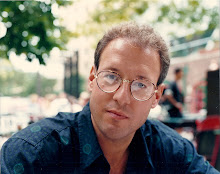Contrary to popular belief most brands tell a great story. At least that's what they believe. In reality they're telling a story greatly. What's the difference? Well, brands that tell stories greatly tend to say the same thing their rival does ... their advertising agency just says it differently. Brands that tell great stories have identified a product based selling dimension that dramatically differentiates themselves from competitors.
What are examples of brands that tell their stories greatly? Well, any category composed of heavily price driven commodity brands such as alcohol (beer, wine, ale, spirits), paper (paper towels, bath tissue, disposable diapers, napkins) or personal care products (shampoos, conditioners, oral care, etc.) ... some of the largest categories in consumer products utilize positioning strategies that converge on the same position as their rival ... they just have ad agencies that say the same thing differently. Detergents all claim to clean better and faster. All alcoholic beverages address the need state "to party" or "to relax." There isn't a single toothpaste (sensitive teeth being the exception) that doesn't trade on one of the five category attributes that account for all consumer perceptions in oral care - whitening, cavity prevention, breath care, gum care and tartar control. Year after year the message gets stale and only updated with new copy and actors ... not product based differentiators. Consequently, their ad spending drives category consumption rather than brand selection - ergo the saying, " I know that at least half of my advertising budget works ... I just don't know which half."
What are examples of brands that tell a great story? Well, Pampers recognized that 'fit' and 'dryness' were generic category cost of entry story parameters. Identifying an infant and toddler's 'development' finally enabled Pampers Phases Developmental Diapers to grow the business (ownable by Pampers) rather than the category by $1.2 billion per year for a decade, better relate to the emotional rewards of parenting and arrest toddler migration to arch rival Kimberly-Clark's Pull Ups. And for a fraction of the previous brand budget. Just one word, "development" made all the difference.
Now that's telling a great story, not telling a story greatly.
Another example of using a product-based selling dimension for the first time no one has seen to tell a great story? Back in the day the big three GRC (Ground Roast Coffee) brands - Maxwell House, Folgers and Hills Bros/MJB all thought people bought their product for convenience, flavor and aroma. Not true. These "me too" cost of entry parameters did not enable the brands to connect with their customer's lifestyles. For example, New Englanders did not spend their Sunday mornings with the New York Times and Maxwell House because of the brand's flavor and aroma. They bought the brand because the best part of their waking up is/was caffiene in their cup. The active product based selling dimension is 'stimulation' not flavor or aroma. This realization turned $300 million Folgers into a $1.6 billion brand and left Maxwell House standing in the dust.
Not long ago I was speaking with a Kraft Foods Marketing Director running the Gevalia Business. He wanted to know if I had any coffee experience. The conversation ended with his exclamation, "So you're the son of a bitch that did that to Maxwell House!" "You need to speak with Bob Levi." Bob is President of Kraft Foods Beverage Business. Having called Bob he listened then said, "Well I've been working for Kraft 22 years and I've never heard of you." And I said, "Well I've been working for Kraft for 35 years and I've never heard of you either. Would you like to hear what I've worked on at Kraft?" He "harumphed" and said I'd never worked at Kraft. I guess he'd better go ask, Karen Scott, Eric Strobel, Bob Morrison, and about 50 other functional line management and C-suite execs who welcomed me to the company to work on their brands. Needless to say I wasn't going to get a chance to work on Maxwell House or for Bob Levi though I've been pitching Maxwell House for about 40 years. Then I saw new advertising for Maxwell House. Same flavor and aroma crap. Bob Levi was so busy putting up walls and protecting his turf he hadn't heard a thing I said.
Now that's telling a great story. Not telling a story greatly.





